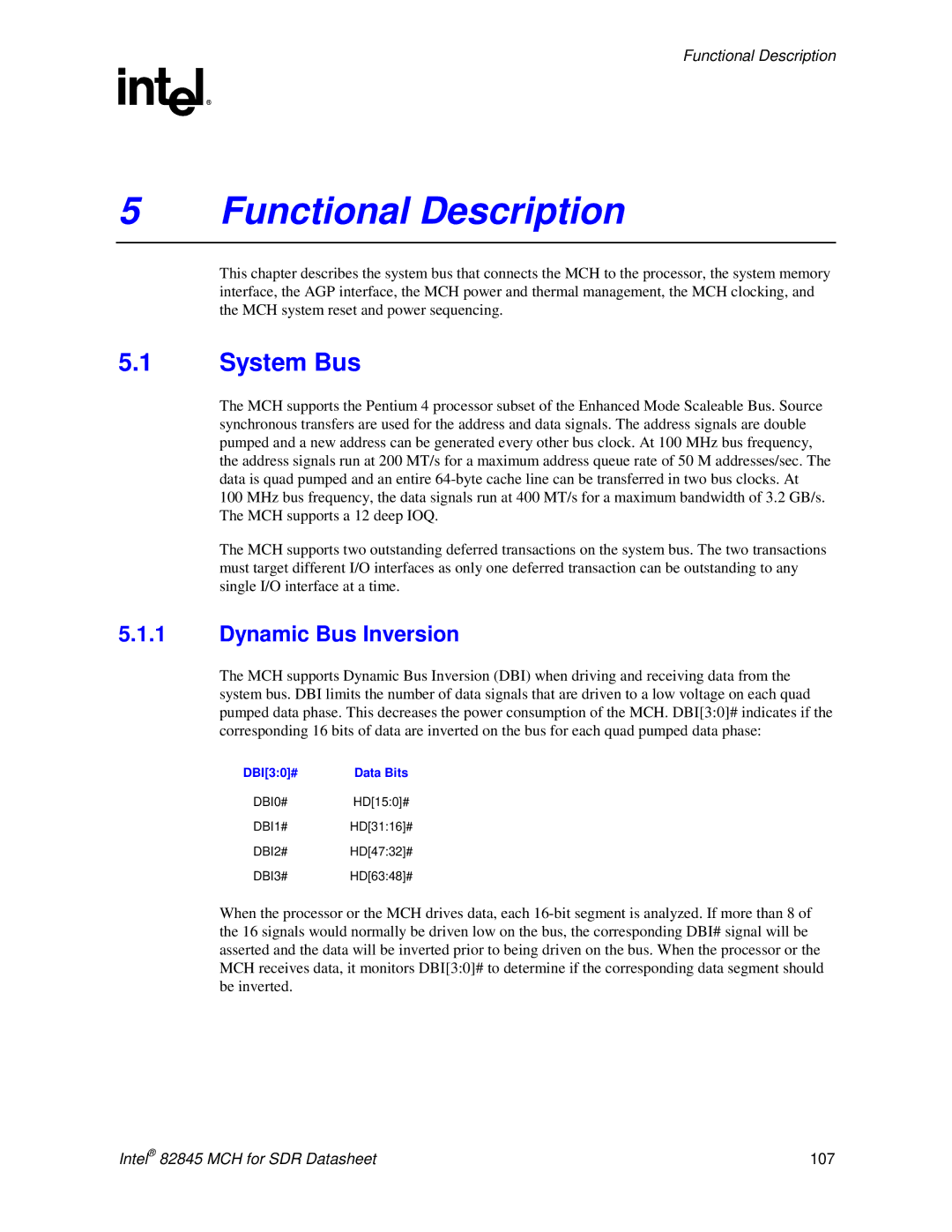
Functional Description
R
5 Functional Description
This chapter describes the system bus that connects the MCH to the processor, the system memory interface, the AGP interface, the MCH power and thermal management, the MCH clocking, and the MCH system reset and power sequencing.
5.1System Bus
The MCH supports the Pentium 4 processor subset of the Enhanced Mode Scaleable Bus. Source synchronous transfers are used for the address and data signals. The address signals are double pumped and a new address can be generated every other bus clock. At 100 MHz bus frequency, the address signals run at 200 MT/s for a maximum address queue rate of 50 M addresses/sec. The data is quad pumped and an entire
100 MHz bus frequency, the data signals run at 400 MT/s for a maximum bandwidth of 3.2 GB/s. The MCH supports a 12 deep IOQ.
The MCH supports two outstanding deferred transactions on the system bus. The two transactions must target different I/O interfaces as only one deferred transaction can be outstanding to any single I/O interface at a time.
5.1.1Dynamic Bus Inversion
The MCH supports Dynamic Bus Inversion (DBI) when driving and receiving data from the system bus. DBI limits the number of data signals that are driven to a low voltage on each quad pumped data phase. This decreases the power consumption of the MCH. DBI[3:0]# indicates if the corresponding 16 bits of data are inverted on the bus for each quad pumped data phase:
DBI[3:0]# | Data Bits |
DBI0# HD[15:0]#
DBI1# HD[31:16]#
DBI2# HD[47:32]#
DBI3# HD[63:48]#
When the processor or the MCH drives data, each
Intel® 82845 MCH for SDR Datasheet | 107 |
